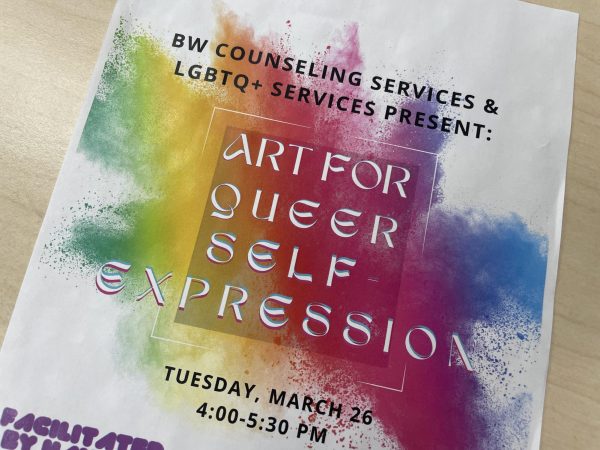Psychologist, therapist discuss how seasonal affective disorder affects students
“Here in Cleveland, you’re going to see a good bit of mood disturbance on account of the weather and the seasonal patterns just because the weather can get so glum during the winter months,” therapist Timothy Hall said.
Seasonal Affective Disorder is a mental disorder that causes many individuals’ mood and overall mental health to be negatively impacted over the fall and winter months. Compounded in part by Northeast Ohio’s infamous weather, Baldwin Wallace students are not immune to the effects of SAD.
Kayela Swansiger, a junior psychology major, shared her experiences with SAD and how it affects her bipolar disorder.
“The weather outside can potentially trigger manic episodes in me as result of the comorbidity of seasonal affective disorder and bipolar disorder. Even just going outside and seeing that it is not so [nice] out, does not make one feel so pretty on the inside,” Swansiger said.
Timothy Hall, a therapist that works with Timely Care at Baldwin Wallace University, said it can be difficult to tell who all is suffering from stress and changes to their affect due to SAD because of all the other stressors happening to students in their daily lives.
“Here in Cleveland, you’re going to see a good bit of mood disturbance on account of the weather and the seasonal patterns just because the weather can get so glum during the winter months,” Hall said. “It certainly doesn’t help anything.”
However, Hall said it is difficult to determine how common SAD is among BW students.
“You know, I don’t know that we can discern that really because of the context of the academic year in which we work,” Hall said. “There’s this ebb and flow of the stress of the academic year. With new semesters, new classes, midterms, finals, adjustment to campus, adjustment back home, there are so many variables that impact mental health for students on campus, but the seasonal pattern is certainly one of them.”
According to Evelyn Campbell, a licensed clinical social worker and therapist from Pennsylvania, SAD is widely attributed to a lack of sunlight. Specifically, it is the reduced level of sunlight that disrupts the body’s circadian rhythm.
Campbell compared SAD to a depression, in which people become sad for periods of time, often lose interest in various activities, develop a tendency to eat more, have difficulty concentrating and have lower energies causing them to sometimes sleep too much.
Nevertheless, Swansiger said she has found a way to cope with SAD in those days.
“Light therapy has probably been the most beneficial for me, especially since Cleveland is very gray,” Swansiger said.
The Exponent is looking for financial contributions to support our staff and our newsroom in producing high-quality, well-reported and accurate journalism. Thank you for taking the time to consider supporting our student journalists.

















































Marc • Apr 17, 2023 at 5:45 am
Time changes also influences mood, especially when they reduce the amount of sunlight we receive. Sunlight produces serotonin, which is the body’s great mood elevator. Dr. Gavin Lambert and his colleagues in Australia measured serotonin levels in response to varying degrees of bright light. To do this, they drew blood samples from the internal jugular veins of 101 men and compared the serotonin concentration of the blood to weather conditions and seasons. The results were remarkable: Men measured on a very bright day produced eight times more serotonin than those who measured on a cloudy, dismal day. They also observed that the effect of bright light was immediate, and that there was no holdover from day to day. There we have the answer to poor mood or SAD. It is also a good reason to leave the cave. When the sun is shining, winter or summer, wherever you are, take advantage of it. It will elevate your mood and make you feel more alive. More information: sunlightinstitute.org and read the book embrace the Sun.